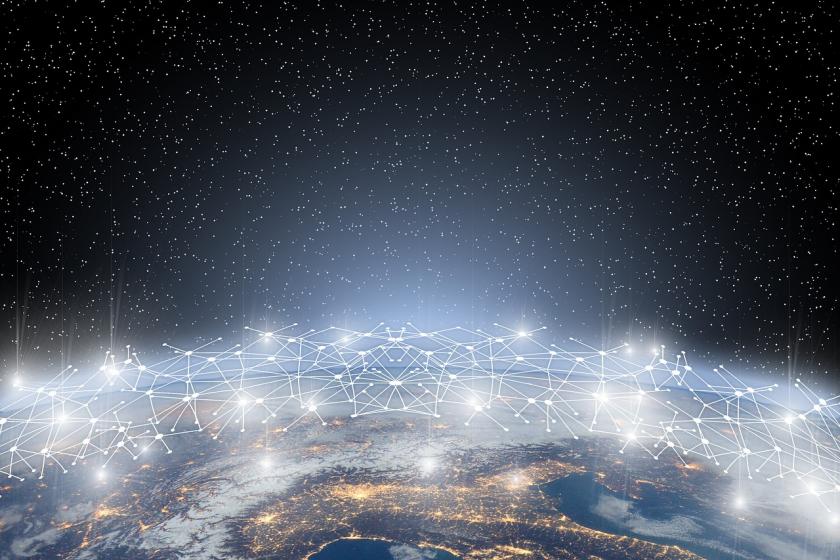A Nation Divided: Innovating Internet Accessibility for AllA Nation Divided: Innovating Internet Accessibility for All
Until we have a better standard for infrastructure and access across the U.S., many will still need to get creative to meet today's critical demands.
February 1, 2021

Internet access, like electricity, has become a life necessity. While food, shelter, and water are critical for survival, connectivity is crucial for communication, information, education, and income. A longstanding issue in the telecommunications industry, the digital divide has plagued rural and remote areas, but in the wake of the pandemic, it has taken the national spotlight as many struggle to work and learn from home.
Despite various programs and initiatives, particularly in recent months, progress has continued to be stalled to generate true, high-speed (or any speed) accessibility in these areas. In fact, the FCC reports approximately 19 million Americans — 6% of the population — still lack access to fixed broadband service at threshold speeds. In rural areas, nearly one-fourth of the population — 14.5 million people — lack access. With little hope for meaningful progress in the near future, some have taken matters into their own hands to develop creative solutions to bridge this divide.
How did we get here?
The answer is two-fold. First, we don't have a sufficient broadband infrastructure in the U.S., particularly in less populated and lower-income areas. Many places lack the physical framework (underground conduits, utility poles) that makes it possible to easily build out fiber connectivity.
Second, even in areas with a strong infrastructure in place for fiber cables to be expanded,
an internet provider still needs interconnection points to connect to the internet. Connecting its local fiber build-out can be done via a telecom carrier hotel, but these are often located far outside smaller local communities. So even where fiber is laid in these rural areas, there are significant challenges to connect back to the internet.
Ultimately, as most things often do, the issue boils down to economics. Low population density means a larger area to cover, and thus, high capital costs. With fewer potential subscribers reached by a fiber rollout, the build-out infrastructure price per subscriber is also much higher, often making the ROI too low to implement without government or state subsidies. But despite various subsidy programs over the years, the problem persists. Often, subsidies have been given to the incumbent providers who have under-supplied these areas. Perhaps it is time for a new framework.
A New Standard
With a new FCC leading the charge in 2021, we can look at what a new framework might entail. In a perfect world, it should rely on some new principles:
Public funds should be spent on publically-owned enabling infrastructure, sometimes called "Layer Zero" this includes utility poles, conduits, points of entry, ROWs, and more.
Access to public layer zero infrastructures should be made to private ISPs on an open access, non-discriminatory basis.
Local governments should look to provide dark fiber or lit fiber as needed, where the private marketplace is insufficient.
A report published by the Benton Institute for Broadband & Society, titled " Public Infrastructure/Private Service: A Shared-Risk Partnership Model for 21st Century Broadband Infrastructure," outlines this type of framework as a way to enable innovation and to avoid lock into a single provider.
In a best-case scenario, multiple private ISPs would compete to provide services to customers that functions of governments are often ill-equipped to do. This approach not only generates a smarter, broader market in which local ISPs and wireless ISPs can offer competitive services but could greatly increase accessibility. WISPs essentially extend the reach of the fiber infrastructure through airwaves, so having fiber pushed further out offers greater overall connectivity for an area. Recently, the FCC freed up additional spectrum to boost this capability.
Additionally, Low Earth Orbiting (LEO) satellites are poised to come online in the next few months, a new option for remote broadband connectivity. Satellites, by definition, circumvent the terrestrial obstacles of topology and distance. Communities may want to take LEOs into account as they plan their infrastructure builds.
Bit by bit, finding new ways to connect
Until we have a better standard for infrastructure and access across the U.S., many will still need to get creative to meet today's critical demands. A great example of creativity in expanding fiber networking capabilities recently came from American Tower. It began using the ground space at existing tower locations to help enterprises build distributed data centers in remote and rural areas. By placing containers where there already was connectivity, electrical power, and dark fiber assets, it created distributed edge-data centers that could host local compute and CDN resources.
The CDN functionality enables streaming of high-bandwidth content – everything from Netflix and YouTube to Zoom video classes and meetings - to serve populations in remote areas without buffering issues. This removes the bottleneck that often creates a lag between the remote area and data center.
Even the USPS is trying to address the need for better accessibility across the U.S.; recently, it reported its facilities could be used as fiber optic cable connection points. In addition, USPS buildings might act as “digital hubs,” providing a central location for public connectivity to Wi-Fi. In extending these networks with infrastructures that already exist in many remote and rural areas, it opens the door for a new way to broaden accessibility.
And not to be outdone by USPS, FedEx recently announced a similar initiative, partnering with Switch and Dell.
The internet is clearly essential to modern living, and while there is still a ton of work to be done to bring everyone online. The pandemic has applied additional urgency to the situation and acted as a catalyst to spark new thinking and innovation, which could finally tackle this longstanding issue and perhaps make the internet accessible for everyone in the future.
Shrihari Pandit is CEO of Stealth Communications.
Read more about:
Remote connectivityAbout the Author
You May Also Like




